« back
Data and Leave No One Behind
The data side of leaving no one behind
 October 2021 / Nora Tanner, Academic Intern, Quality Assurance Section / Gender and Social Equality Unit, Swiss Agency for Development and Cooperation (SDC)
October 2021 / Nora Tanner, Academic Intern, Quality Assurance Section / Gender and Social Equality Unit, Swiss Agency for Development and Cooperation (SDC)
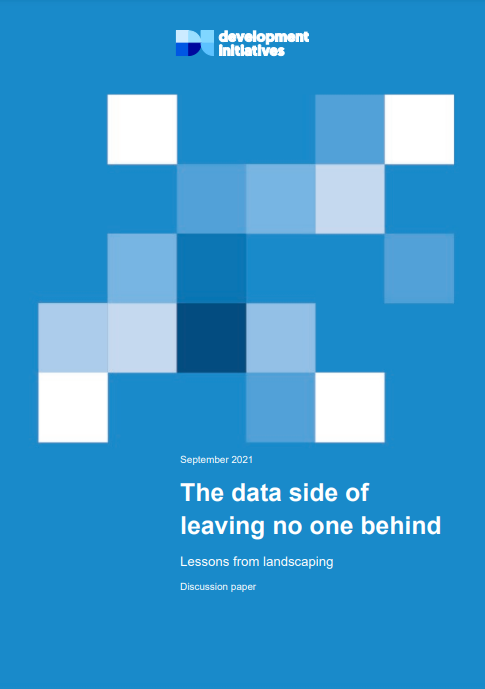 “In order for people to count, you need to count people.”
“In order for people to count, you need to count people.”
Births need to be registered, visits to health facilities need to be recorded, progress through school needs to be monitored. This is not the case in low income countries, particularly in fragile and conflict-affected states.
To contribute to a better data collection, analysis and use, Development Initiatives developed their own approach called data landscaping. Its covers the political economy of data within a country; the structures and standards that govern the collection, the use of data, and much more. Every country has its own unique political economy, but that is not to say there are not many similarities. This report is the first attempt at mapping out this common ground at the national level and sharing revealing findings on what needs to be in place for people to be counted so they start counting. Read more»
World Development Report: Data for Better Lives
 October 2021 / Nora Tanner, Academic Intern, Quality Assurance Section / Gender and Social Equality Unit, Swiss Agency for Development and Cooperation (SDC)
October 2021 / Nora Tanner, Academic Intern, Quality Assurance Section / Gender and Social Equality Unit, Swiss Agency for Development and Cooperation (SDC)
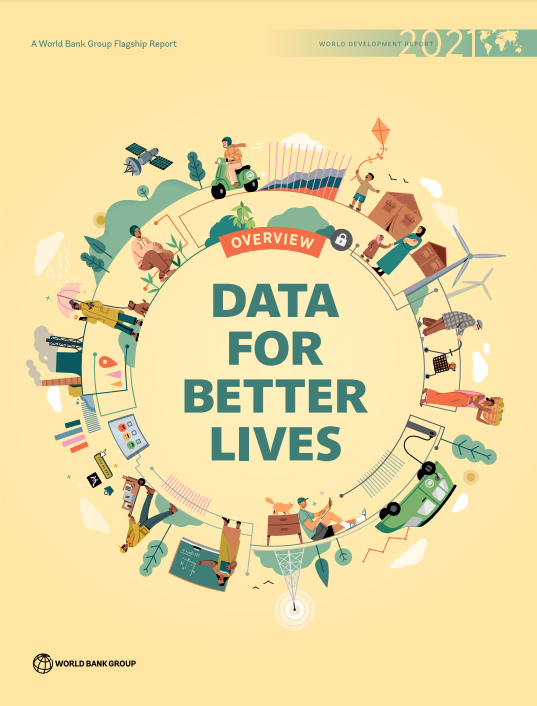
Data, which are growing at an unprecedented rate, are becoming an integral part of the daily lives of most people everywhere. But how does that matter for the more than 700 million people living in extreme poverty? According to this report by the World Bank, data can improve social and economic outcomes. But only if they are used systematically in ways that create information that generates insights that improve lives.
The report aims to answer two fundamental questions. First, how can data better advance development objectives? Second, what kind of data governance arrangements are needed to use data in a safe, ethical, and secure way while also delivering value equitably? Download the report in multiple languages here»
Lessons Learned Report: Advancing Inclusive SDG Data Partnerships
 September 2021 / Nora Tanner, Academic Intern, Quality Assurance Section / Gender and Social Equality Unit, Swiss Agency for Development and Cooperation (SDC)
September 2021 / Nora Tanner, Academic Intern, Quality Assurance Section / Gender and Social Equality Unit, Swiss Agency for Development and Cooperation (SDC)
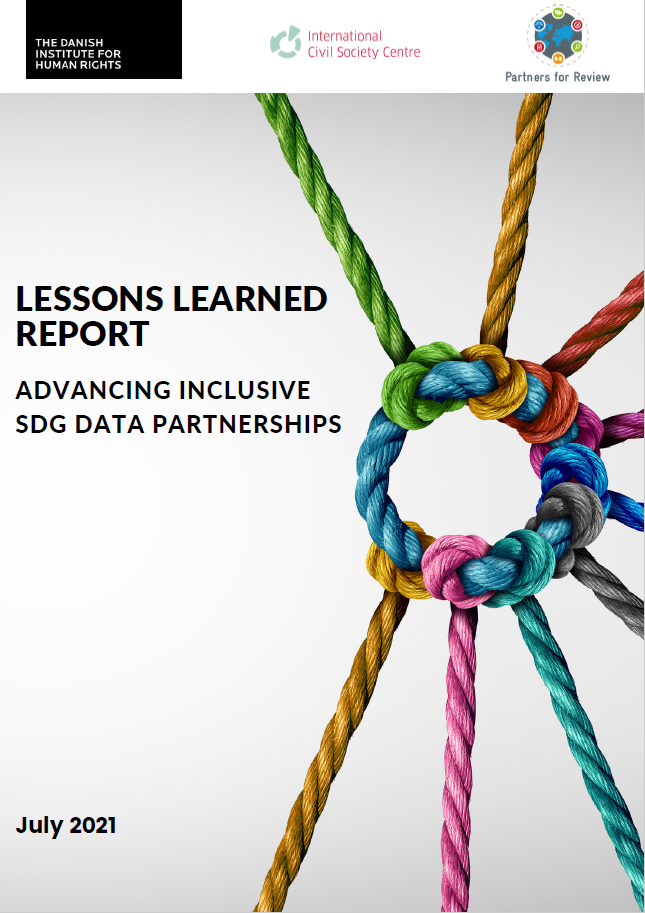 Achieving the SDGs requires that progress and lags are being effectively monitored and reported. Monitoring and reporting can pinpoint where meeting the goals is on track, where progress is uneven, and where new approaches are needed. Existing official statistics are not enough to meet these monitoring and reporting needs. To fill the gap, alternative data sources, can complement official statistics to meet the SDG data challenge and ensure that no one is left behind. This joint learning report with Partners for Review (hosted by GIZ), the Danish Institute for Human Rights and the International Civil Society Centre summarises the initial experience and learnings generated by the SDG Data Partnerships initiative, which aims to support an enabling environment for inclusive collaborations. Read more»
Achieving the SDGs requires that progress and lags are being effectively monitored and reported. Monitoring and reporting can pinpoint where meeting the goals is on track, where progress is uneven, and where new approaches are needed. Existing official statistics are not enough to meet these monitoring and reporting needs. To fill the gap, alternative data sources, can complement official statistics to meet the SDG data challenge and ensure that no one is left behind. This joint learning report with Partners for Review (hosted by GIZ), the Danish Institute for Human Rights and the International Civil Society Centre summarises the initial experience and learnings generated by the SDG Data Partnerships initiative, which aims to support an enabling environment for inclusive collaborations. Read more»
An Unequal Pandemic: Insights and Evidence from Communities and Civil Society Organisations
 September 2021 / Nora Tanner, Academic Intern, Quality Assurance Section / Gender and Social Equality Unit, Swiss Agency for Development and Cooperation (SDC)
September 2021 / Nora Tanner, Academic Intern, Quality Assurance Section / Gender and Social Equality Unit, Swiss Agency for Development and Cooperation (SDC)
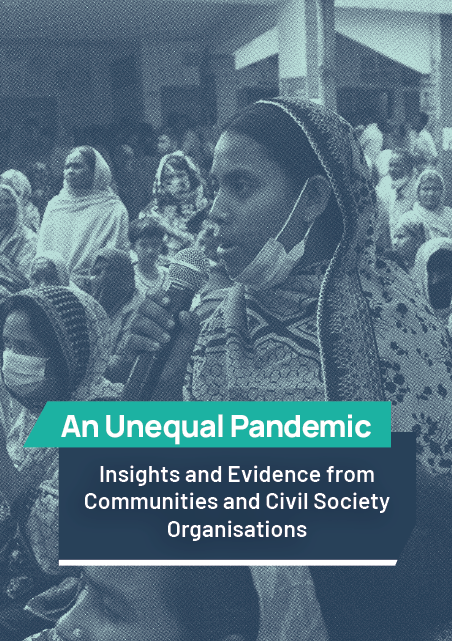 Effective COVID-19 pandemic responses and recoveries require a comprehensive understanding of both the impact of COVID-19 on people who have been marginalised and the strategies used by communities to adapt to and manage these impacts. Data collected by communities and civil society organisations (CSOs) can increase the visibility of people and groups overlooked by official data, improving understanding of their situations and coping strategies. “We must challenge the limitations of data generated and/ or validated by National Statistical Offices if we want data that truly represents the experience of all of society." This collaborative report with the GPSDD network provides important recommendations that, if implemented, will help place communities at the centre of pandemic response and recovery. Read more»
Effective COVID-19 pandemic responses and recoveries require a comprehensive understanding of both the impact of COVID-19 on people who have been marginalised and the strategies used by communities to adapt to and manage these impacts. Data collected by communities and civil society organisations (CSOs) can increase the visibility of people and groups overlooked by official data, improving understanding of their situations and coping strategies. “We must challenge the limitations of data generated and/ or validated by National Statistical Offices if we want data that truly represents the experience of all of society." This collaborative report with the GPSDD network provides important recommendations that, if implemented, will help place communities at the centre of pandemic response and recovery. Read more»
Indicators matter to leave no one behind
An indicator toolbox to leave no one behind in fighting poverty and inequality
A practical guide for project designers and implementers
 February 2021 / Pradeep Itty, Head of Quality Assurance, Swiss Agency for Development and Cooperation (SDC)
February 2021 / Pradeep Itty, Head of Quality Assurance, Swiss Agency for Development and Cooperation (SDC)
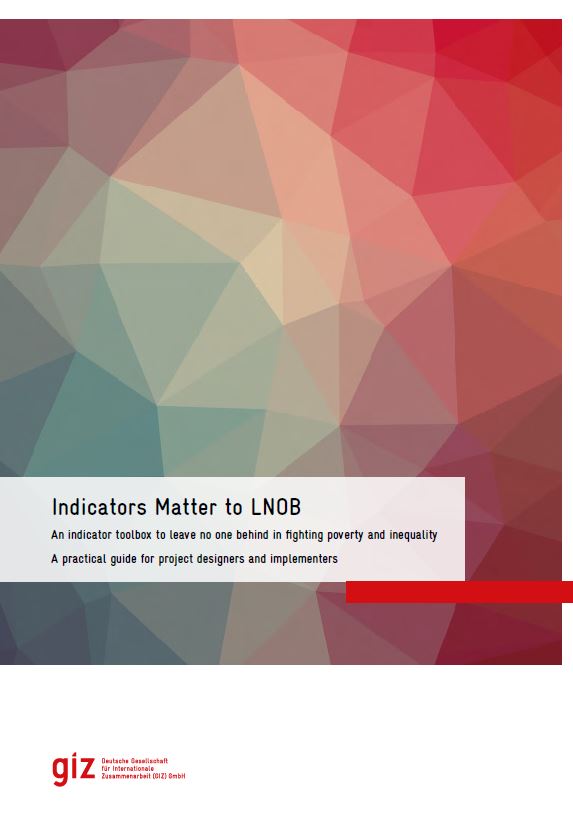 Indicators matter in achieving the 2030 Agenda’s pledge to leave no one behind. As quantitative or qualitative variables, indicators provide a simple and reliable way to measure achievements of development efforts. They can show and track if aid spending is reaching the poor and left behind groups in various contexts. Moreover, what is measured is more likely to get attention, because indicators provide a solid basis for evidence-based decision-making in development projects as well as politics.
Indicators matter in achieving the 2030 Agenda’s pledge to leave no one behind. As quantitative or qualitative variables, indicators provide a simple and reliable way to measure achievements of development efforts. They can show and track if aid spending is reaching the poor and left behind groups in various contexts. Moreover, what is measured is more likely to get attention, because indicators provide a solid basis for evidence-based decision-making in development projects as well as politics.
There is a need for additional efforts to design and use indicators that measure the progress for left behind groups. The new study, commissioned by GIZ and supported by the SDC, and available in English, French and German, provides an indicator toolbox to leave no one behind in fighting poverty and inequality as a practical guide for project designers and implementers to strengthen indicators by making them pro-poor as well as inequality- and LNOB-sensitive.
Poverty trends: global, regional and national
 February 2020 / Estelle Gagnebin, Academic Trainee, Quality Assurance and Poverty Reduction Section, Swiss Agency for Development and Cooperation (SDC)
February 2020 / Estelle Gagnebin, Academic Trainee, Quality Assurance and Poverty Reduction Section, Swiss Agency for Development and Cooperation (SDC)
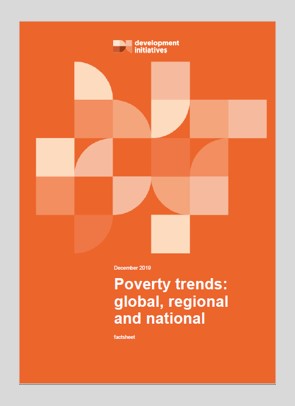
What are the current poverty trends at global, regional and national level? Development Initiatives (DI) sheds light on the current lack of good data for ending poverty. It illuminates the crucial importance of looking at the different levels of poverty trends. Positive global trends mask unequal regional and national trends. It also underlines the priority of developing better data for ending poverty: essential poverty data remains out of date and poverty measurements must go beyond the sole economic dimension to integrate the multidimensionality of poverty. Read more»
Still left behind? Tracking children’s progress against the pledge to Leave No One Behind
 February 2020 / Estelle Gagnebin, Academic Trainee, Quality Assurance and Poverty Reduction Section, Swiss Agency for Development and Cooperation (SDC)
February 2020 / Estelle Gagnebin, Academic Trainee, Quality Assurance and Poverty Reduction Section, Swiss Agency for Development and Cooperation (SDC)
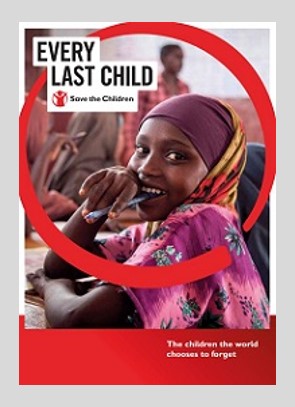
Save the Children's report shows how limited progresses has been made and tackles the issue of monitoring and reviewing of the SDGs when disaggregated data on those who are furthest behind are still lacking. Consequently, the report illustrates how SDG data monitoring focused on the LNOB principle could look like. Five child poverty indicators (child mortality, malnutrition, child marriage, birth registration and primary education) are being calculated, focusing on the progress trends of the world's poorest 20% of households as compared to global average trends. Find out more»
Furthermore, Save the Children created a tool, the "Group-Based Inequality Database (GRID) Child Inequality Tracker" to illustrate ways of monitoring SDGs' progresses nationally, taking into account the children who are furthest behind.
No, 70% of the world’s poor aren’t women, but that doesn’t mean poverty isn’t sexist
“Seventy percent of the world’s extreme poor are women”. If you’ve encountered this statistic before, please raise your hand. That is a lot of hands. And yet, this is what we call a ‘zombie statistic’: often quoted but rarely, if ever, presented with a source from which the number can be replicated. In fact, what we know from existing data is that women account for about 50 percent, not 70 percent, of the world’s extreme poor—although, as is argued in the following World Bank blog, this does not mean poverty is gender neutral.
